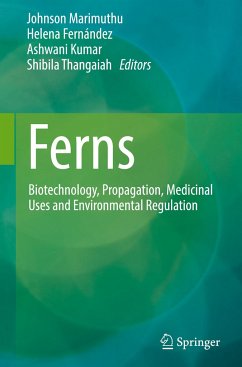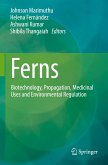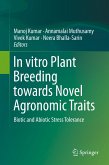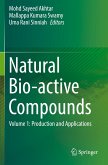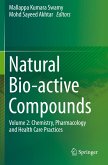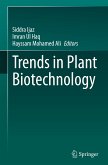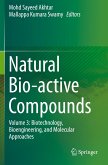Ferns
Biotechnology, Propagation, Medicinal Uses and Environmental Regulation
Herausgegeben:Marimuthu, Johnson; Fernández, Helena; Kumar, Ashwani; Thangaiah, Shibila
Ferns
Biotechnology, Propagation, Medicinal Uses and Environmental Regulation
Herausgegeben:Marimuthu, Johnson; Fernández, Helena; Kumar, Ashwani; Thangaiah, Shibila
- Gebundenes Buch
- Merkliste
- Auf die Merkliste
- Bewerten Bewerten
- Teilen
- Produkt teilen
- Produkterinnerung
- Produkterinnerung
Ferns are representative of genetic inheritance of great value as they include species of ancient vascular plants, which have direct connection with the evolution of plant life on Earth. This volume brings a selection of chapters covering a range of themes on fern biology, its development and growth, useful protocols for propagation and conservation purposes, genetic diversity, as well as medicinal and environmental applications.
The content is organized into four parts: Biotechnology of Ferns Propagation of Ferns Ferns in Medicines Environmental Regulation
This wide spectrum of the…mehr
Andere Kunden interessierten sich auch für
![Ferns Ferns]() Ferns154,99 €
Ferns154,99 €![In vitro Plant Breeding towards Novel Agronomic Traits In vitro Plant Breeding towards Novel Agronomic Traits]() In vitro Plant Breeding towards Novel Agronomic Traits116,99 €
In vitro Plant Breeding towards Novel Agronomic Traits116,99 €![In vitro Plant Breeding towards Novel Agronomic Traits In vitro Plant Breeding towards Novel Agronomic Traits]() In vitro Plant Breeding towards Novel Agronomic Traits116,99 €
In vitro Plant Breeding towards Novel Agronomic Traits116,99 €![Natural Bio-active Compounds Natural Bio-active Compounds]() Natural Bio-active Compounds154,99 €
Natural Bio-active Compounds154,99 €![Natural Bio-active Compounds Natural Bio-active Compounds]() Natural Bio-active Compounds116,99 €
Natural Bio-active Compounds116,99 €![Trends in Plant Biotechnology Trends in Plant Biotechnology]() Trends in Plant Biotechnology154,99 €
Trends in Plant Biotechnology154,99 €![Natural Bio-active Compounds Natural Bio-active Compounds]() Natural Bio-active Compounds116,99 €
Natural Bio-active Compounds116,99 €-
-
-
Ferns are representative of genetic inheritance of great value as they include species of ancient vascular plants, which have direct connection with the evolution of plant life on Earth. This volume brings a selection of chapters covering a range of themes on fern biology, its development and growth, useful protocols for propagation and conservation purposes, genetic diversity, as well as medicinal and environmental applications.
The content is organized into four parts:
Biotechnology of Ferns Propagation of Ferns Ferns in Medicines Environmental Regulation
This wide spectrum of the contributions provides quick access to information on the enormous potential of this plant group. This book brings together most recent research work and novel techniques, which is far from the traditional perspective usually followed. It is of interest to teachers, researchers, and botanists. Also the book serves as additional reading material for undergraduate and graduate students of agriculture, botany, forestry, and ecology.
The content is organized into four parts:
Biotechnology of Ferns Propagation of Ferns Ferns in Medicines Environmental Regulation
This wide spectrum of the contributions provides quick access to information on the enormous potential of this plant group. This book brings together most recent research work and novel techniques, which is far from the traditional perspective usually followed. It is of interest to teachers, researchers, and botanists. Also the book serves as additional reading material for undergraduate and graduate students of agriculture, botany, forestry, and ecology.
Produktdetails
- Produktdetails
- Verlag: Springer / Springer Nature Singapore / Springer, Berlin
- Artikelnr. des Verlages: 978-981-16-6169-3
- 1st edition 2022
- Seitenzahl: 736
- Erscheinungstermin: 7. Mai 2022
- Englisch
- Abmessung: 241mm x 160mm x 45mm
- Gewicht: 1256g
- ISBN-13: 9789811661693
- ISBN-10: 9811661693
- Artikelnr.: 62403897
- Herstellerkennzeichnung Die Herstellerinformationen sind derzeit nicht verfügbar.
- Verlag: Springer / Springer Nature Singapore / Springer, Berlin
- Artikelnr. des Verlages: 978-981-16-6169-3
- 1st edition 2022
- Seitenzahl: 736
- Erscheinungstermin: 7. Mai 2022
- Englisch
- Abmessung: 241mm x 160mm x 45mm
- Gewicht: 1256g
- ISBN-13: 9789811661693
- ISBN-10: 9811661693
- Artikelnr.: 62403897
- Herstellerkennzeichnung Die Herstellerinformationen sind derzeit nicht verfügbar.
Dr M. Johnson F.I.F.S., completed his Doctorate in Botany (Plant Tissue Culture) from Manonmaniam Sundaranar University, Tirunelveli District, Tamil Nadu, and is working as Assistant Professor of Botany and Director, Centre for Plant Biotechnology, St. Xavier's College (autonomous), Palayamkottai, Tamil Nadu. He has 21 years of research experience and 18 years of teaching experience. He has published 223 papers in the reputed journals, 27 papers in proceedings and 37 papers as book chapters. He is a recipient of the prestigious SERB Young Scientist - 2013, Prof. S.S. Bir Gold Medal - 2017 and Certificate of Merit 2014 by Indian Fern Society, India. Dr. Helena Fernández is Associate Professor in Plant Physiology at the University of Oviedo, Spain. She received her PhD in Biology in 1993 from Oviedo University, followed by an EU-funded postgraduate research sojourn at the INRA in Orléans, France, training in HPLC-MS techniques. She got the Ramón y Cajal National Excellence Research Program, dealing with reproduction in ferns. Guest researcher at the Institute of Plant Biology, University of Zurich, working on apomixes, through omics techniques. Member of the dean's team, in the Faculty of Biology at the University of Oviedo. She publishes in relevant journals, having edited two books with Springer. Dr Ashwani Kumar Alexander von Humboldt Fellow (Germany), MSc (Botany) (Gold Medalist) (1967)), PhD (1971), post doc AvH Fellow (Germany) and JSPS fellow (Japan) Selected in the Indian Administrative Services (IAS: IPS) (1972) but he opted career in botany. 37 years of teaching & research experience. Guided 39 PhD. research students and published 320 research papers and 26 books. Elected fellow FBS, FPSI, FIMPS and FIFS. Editor in Chief IJLS. V. Puri medal (2008) CEE award (2015). President of CHEC (India), Indian Botanical Society, Society for Promotion of Plant Sciences. Professor Emeritus, Department of University of Rajasthan, Jaipur. Presently, Chair Professor at JVWU, Jaipur and Adj. Professor Modi University, Sikar. Dr. T. Shibila obtained her PhD in Botany from Manonmaniam Sundaranar University, Tirunelveli District, Tamil Nadu, and is working as an Assistant Professor at Sri Paramakalyani Centre for Excellence in Environmental Sciences, Manonmaniam Sundaranar University, Alwarkurichi, Tamil Nadu. She has published more than two book chapters, 20 proceedings, and 25 research papers in the International journals. She has attended 18 national, international conferences and seminars as well as received best paper presentation award in a national conference. She has seven years' research experience on plant tissue culture and optimized the large-scale propagation protocol for four ferns.
Chapter 1. GENOME EVOLUTION IN FERNS: Molecular Phylogenomics: A Review.- Chapter 2. A REVIEW ON MOLECULAR PHYLOGENY OF PTERIDOPHYTES USING DNA BARCODING.- Chapter 3. PLASTOGENOMICS PROVIDES A TOOL TO STUDY PHYLOGENETIC INTERRELATIONSHIPS OF MONILOPHYTES: A REVIEW.- Chapter 4. MOLECULAR MARKERS IN PTERIDOPHYTES.- Chapter 5. The Crucial Role of Ceratopteris richardii in Understanding the Evolution of the WOX Gene Family.- Chapter 6. Domestication of the floating fern symbiosis Azolla.- Chapter 7. Ferns a source of phytoecdysones and their applications in pestiferous insect management.- Chapter 8. Micropropagation of Pteridophytes.- Chapter 9. In vitro propagation of Histiopteris incisa (Thunb.) J. Sm. - an ornamental fern.- Chapter 10. IN VITRO PROPAGATION OF TWO EPIPHYTIC FERNS.- Chapter 11. In vitro Gametophyte development, Reproductive biology and Nitric oxide signaling in Ferns.- Chapter 12. Apogamy, Apospory, Somatic embryogenesis and vegetative propagation in Ferns: A Review.- Chapter 13. Antagonistic Action of Yucasine and DMSO on Apogamy in the Fern Dryopteris affinis ssp. Affinis.- Chapter 14. The effect of phytohormones and inhibitors on apogamous gametophytes of Dryopteris affinis ssp. Affinis.- Chapter 15. Ferns: a potential source of medicine and future prospects.- Chapter 16. PTERIDOPHYTES USED BY PEOPLES OF INDIAN HIMALAYAN REGION AND NORTHERN INDIA - AN OVERVIEW.- Chapter 17. ETHNOBOTANICAL USES OF FERNS AND LYCOPHYTES OF KERALA.- Chapter 18. Phytochemistry of Indian Pteridophytes: A Review.- Chapter 19. Biopotency of Pteridophytes: A Review.- Chapter 20. Omega-3 and Omega-6 Fatty Acids Distribution in Pteridophytes and its Significance in Nutraceutical, Pharmacology and Cosmetic Industry.- Chapter 21. In-vitro antiproliferative effect of Angiopteris evecta (G. Forst.) Hoffmextracts against cultured Ht-29 Colon cancer Cells.- Chapter 22. Adiantum L.: Overview on Taxonomy, Distribution, Conservation status Ethnomedicinal uses, Phytochemistry and Pharmacognosy from India.- Chapter 23. Phytochemical composition, in vitro antioxidant and antidiabetic activities of Nephrolepis auriculata (L.) Trimen, an unexplored ethnomedicinal fern.- Chapter 24. Ferns as ecological indicators.- Chapter 25. Diversity of ferns and lycophytes at different spatial scales, along environmental gradients and in the anthropogenic landscape.- Chapter 26. PTERIDOPHYTES: EFFECTIVE AGENTS OF PHYTOREMEDIATION.- Chapter 27. Pteridophytes as Effective Biosorption Agents of Heavy Metals.- Chapter 28. Azolla's use as a biofertilizer and livestock feed.- Chapter 29. Pteridium aquilinum: a threat for biodivers+B36ity, and human and animal health.
Chapter 1. GENOME EVOLUTION IN FERNS: Molecular Phylogenomics: A Review.- Chapter 2. A REVIEW ON MOLECULAR PHYLOGENY OF PTERIDOPHYTES USING DNA BARCODING.- Chapter 3. PLASTOGENOMICS PROVIDES A TOOL TO STUDY PHYLOGENETIC INTERRELATIONSHIPS OF MONILOPHYTES: A REVIEW.- Chapter 4. MOLECULAR MARKERS IN PTERIDOPHYTES.- Chapter 5. The Crucial Role of Ceratopteris richardii in Understanding the Evolution of the WOX Gene Family.- Chapter 6. Domestication of the floating fern symbiosis Azolla.- Chapter 7. Ferns a source of phytoecdysones and their applications in pestiferous insect management.- Chapter 8. Micropropagation of Pteridophytes.- Chapter 9. In vitro propagation of Histiopteris incisa (Thunb.) J. Sm. - an ornamental fern.- Chapter 10. IN VITRO PROPAGATION OF TWO EPIPHYTIC FERNS.- Chapter 11. In vitro Gametophyte development, Reproductive biology and Nitric oxide signaling in Ferns.- Chapter 12. Apogamy, Apospory, Somatic embryogenesis and vegetative propagation in Ferns: A Review.- Chapter 13. Antagonistic Action of Yucasine and DMSO on Apogamy in the Fern Dryopteris affinis ssp. Affinis.- Chapter 14. The effect of phytohormones and inhibitors on apogamous gametophytes of Dryopteris affinis ssp. Affinis.- Chapter 15. Ferns: a potential source of medicine and future prospects.- Chapter 16. PTERIDOPHYTES USED BY PEOPLES OF INDIAN HIMALAYAN REGION AND NORTHERN INDIA - AN OVERVIEW.- Chapter 17. ETHNOBOTANICAL USES OF FERNS AND LYCOPHYTES OF KERALA.- Chapter 18. Phytochemistry of Indian Pteridophytes: A Review.- Chapter 19. Biopotency of Pteridophytes: A Review.- Chapter 20. Omega-3 and Omega-6 Fatty Acids Distribution in Pteridophytes and its Significance in Nutraceutical, Pharmacology and Cosmetic Industry.- Chapter 21. In-vitro antiproliferative effect of Angiopteris evecta (G. Forst.) Hoffmextracts against cultured Ht-29 Colon cancer Cells.- Chapter 22. Adiantum L.: Overview on Taxonomy, Distribution, Conservation status Ethnomedicinal uses, Phytochemistry and Pharmacognosy from India.- Chapter 23. Phytochemical composition, in vitro antioxidant and antidiabetic activities of Nephrolepis auriculata (L.) Trimen, an unexplored ethnomedicinal fern.- Chapter 24. Ferns as ecological indicators.- Chapter 25. Diversity of ferns and lycophytes at different spatial scales, along environmental gradients and in the anthropogenic landscape.- Chapter 26. PTERIDOPHYTES: EFFECTIVE AGENTS OF PHYTOREMEDIATION.- Chapter 27. Pteridophytes as Effective Biosorption Agents of Heavy Metals.- Chapter 28. Azolla's use as a biofertilizer and livestock feed.- Chapter 29. Pteridium aquilinum: a threat for biodivers+B36ity, and human and animal health.

